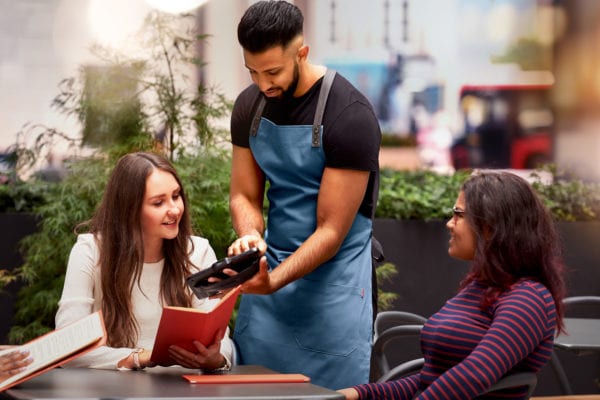This year’s MAD5 conference, held in Copenhagen, was different than 2014’s MAD4 for a couple of reasons: it was smaller than the last event (by about half) and instead of two full days of keynotes, participants ran smaller sessions during certain times during the day. This made for diverse perspectives and better connections. Also different: the tone of the conference. While I was able to pull interesting restaurant+technology questions from the keynotes in 2014, this year felt much different.
So, what was MAD’s idea of “Tomorrow’s Kitchen?” This year’s theme obviously intrigued me, but ended up delivering in a far different way than I imagined. Instead of the technologically-connected, digitally-savvy kitchen and cook, discussion centered around the very human elements at play in restaurants around the world.
As it turns out, these same human elements, feelings, and questions apply to the way we think of restaurant technology and forward progress, and the symposium was a strong reminder that hospitality is, at its core, a human experience. So, this week, Chefs+Tech takes a short break from reporting the news to spotlight key ideas from #MAD5 and how they parallel food and restaurant technology.
(Next week, a return to regularly-scheduled programming.)
Thoughts, Ideas, Parallels, and Important Messages from MAD5
Success in the kitchen requires creativity + education + logistics. More specifically, success requires striking a balance of these three things. The same holds true for products meant to support or enhance the restaurant industry. This is not a “pick two” situation; success requires all three.
The best kitchens are connected — to suppliers, deliveries, farmers, purveyors; all those who provide food. This sentiment, laid out by Brazil’s legendary Alex Atala, implies some kitchens are disconnected, which, in times of corporate suppliers, frozen food, endless paperwork and administrative duties, and the myriad other things associated with running a business, is true. Technology can heed this advice in a different way. “Connected” has plenty of connotations in technological product development, and plenty of connected products (presumably, “connected” here means connected to the internet or bluetooth or similar) make kitchens smarter. But it’s that initial, oh-so-important connection of a kitchen to the food that it prepares that anyone working in the industry should keep top-of-mind. The question: How can technology help these connections deepen when so much of the business is the human touch?
A good restaurant is good to the community. This sentiment came from a decidedly non-tech-supporting Trevor Gulliver, but certainly applies on a technological scale. Similar to “a good kitchen is connected,” a good restaurant respects, serves, and works within the community it serves.
With big risk-taking comes immense responsibility. For a restaurant, this means responsibility to customers and responsibility to staff. For a technology company, this means responsibility to the industry it serves, customers, and staff.
Use every resource to improve the day-to-day. NYC Mission Chinese’s Angela Dimayuga gave a poignant speech about burning the candle at both ends, compromising her health and well-being. After sickness, injury, and some reflection, she realized the do-it-all attitude was creating more harm than good and embraced what helped, including technology to alleviate some time-sucking business burdens. Chefs are full of heart, soul, and passion for their craft, and restaurant tech has a fantastic opportunity to streamline processes creating efficiency in personal energy. But your efficiency idea should also have a heart.
The importance of transparency, honesty, real talk. Perhaps the most emotional keynote came from Kat Kinsman, editor of Extra Crispy, author of Hi, Anxiety (out this November), and creator of Chefs With Issues, a website devoted to collecting, sharing, and learning from stories of mental health challenges in the restaurant industry. In fact, her speech was so moving, it colored the entire symposium; an air of self-care and care for others filled the room (well, tent) as others spoke over the two-day event. For me, this was the most humanizing experience of the event; a reminder that the people in a restaurant are people, working to please other people and create great experiences. Any technology built on top of an industry made up of people must honor this hospitality tenet.


